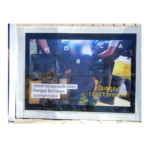Australian Police Continue to Apply Prone Restraint Despite Multiple Deaths

The prone position involves a person lying face down on the ground. Police and corrections officers the world over apply the prone restraint when they’re trying to subdue an individual. And the use of this position during such episodes, does result in deaths in custody.
The reasons why these deaths occur when an often-handcuffed individual is in the position aren’t properly understood. But the use of the restraint can result in deaths attributed to cardiac arrest, positional asphyxia and some consider that it results in death triggered by excited delirium.
A number of high-profile Aboriginal deaths in custody in this country have involved the prone position. These include the deaths of Ms Wynne and Mr Riley in WA, as well as that of Wayne Fella Morrison in a South Australian prison.
When a custody death involves this restraint, authorities will announce that the reasons for death are unknown. And following the 2019 death of Ms Wynne, it was said she simply lost consciousness whilst in handcuffs and died five days later in hospital, without the prone position being mentioned.
The common prone position fatality scenario is shown during the horrific footage of the 2015 death of David Dungay Junior, as a team of specialist officers held him face down on a Long Bay Gaol prison bed and applied pressure to his back as he screamed he couldn’t breathe, until he ceased to do so.
The most notorious police custody death involving the prone restraint on a global scale is the 2020 murder of George Floyd by Minneapolis police officers on the side of a busy road in broad daylight as multiple onlookers filmed the killing, which then went viral.
Potentially fatal
But while there are countering theories about prone restraint deaths, it’s well understood that the position itself is potentially fatal. Indeed, police force management around the globe understand this, as do numerous on-the-beat officers. Yet, it continues to be applied.
Dozens of academic papers have been produced since the early 1990s, inquiring into whether the prone position is to blame for the police custody deaths it’s involved in, as well as deliberating upon how it results in death.
These studies are mainly from the US where at least 120 police custody deaths are attributed to the restraint. And currently, there are ten police custody deaths in this country, where the use of the prone position has been deemed a factor contributing to death.
In his November 2019 coronial findings into the custody death of David Dungay Junior, NSW deputy state coroner Derek Lee considers whether the officers involved in the application of the prone position had received adequate training on positional asphyxia.
The coroner’s questions are prompted by the footage, which shows officers continuing to apply pressure to the 26-year-old Dunghutti man’s back as he calls out repeatedly that he can’t breathe and gasps for breath.
One officer told Dungay that he must have been able to breath as he could speak, which isn’t scientifically true.
Despite officers ignoring the man’s pleas, the coroner made no recommendation for a criminal investigation. And instead of suggesting an end to the use of the prone position, he called for the training already provided to officers regarding its potential to cause death be continued.
Potential for further use
In April last year, WA coroner Philip Urquhart determined that Noongar woman Ms Wynne had suffered a cardiac arrest while police officers were restraining her face down in the prone position as she’d been taken into custody.
The coroner went on to make two recommendations. The first was that officers need to be made aware of the potential for the prone restraint to result in death and that they monitor breathing, while the second was that the restraint only be used in “exceptional circumstances”.
In terms of the inquest into Mr Riley’s death, WA coroner Michael Jenkin recommended in 2021 that police be issued with leg restraints to use as an alternative to the prone position, which was applied to the Noongar man for 10 minutes, after he was repeatedly tasered in a carpark in 2017.
WA police commissioner Col Blanch told the ABC in November that in response to the Wynne and Riley inquests, his force was introducing “fast-strap” leg restraints, which, when applied, negate any need to use the prone position.
New officers will be trained with the leg devices. However, it was left up in the air as to what would happen with regard to officers that are already working in the force.
And as an example of how the dangerous prone restraint has continued to be used by police globally over the three decades despite its legitimacy being questioned, WA’s top cop further told the national broadcaster that no prohibition has been placed on its use.
“We’re always going to have to try our best. We don’t want to put people in a prone position and hold them there,” Blanch said. “But if they are creating a danger for officers, we will continue to do that. The leg restraints are there as an option to reduce the risk of that occurring.”







